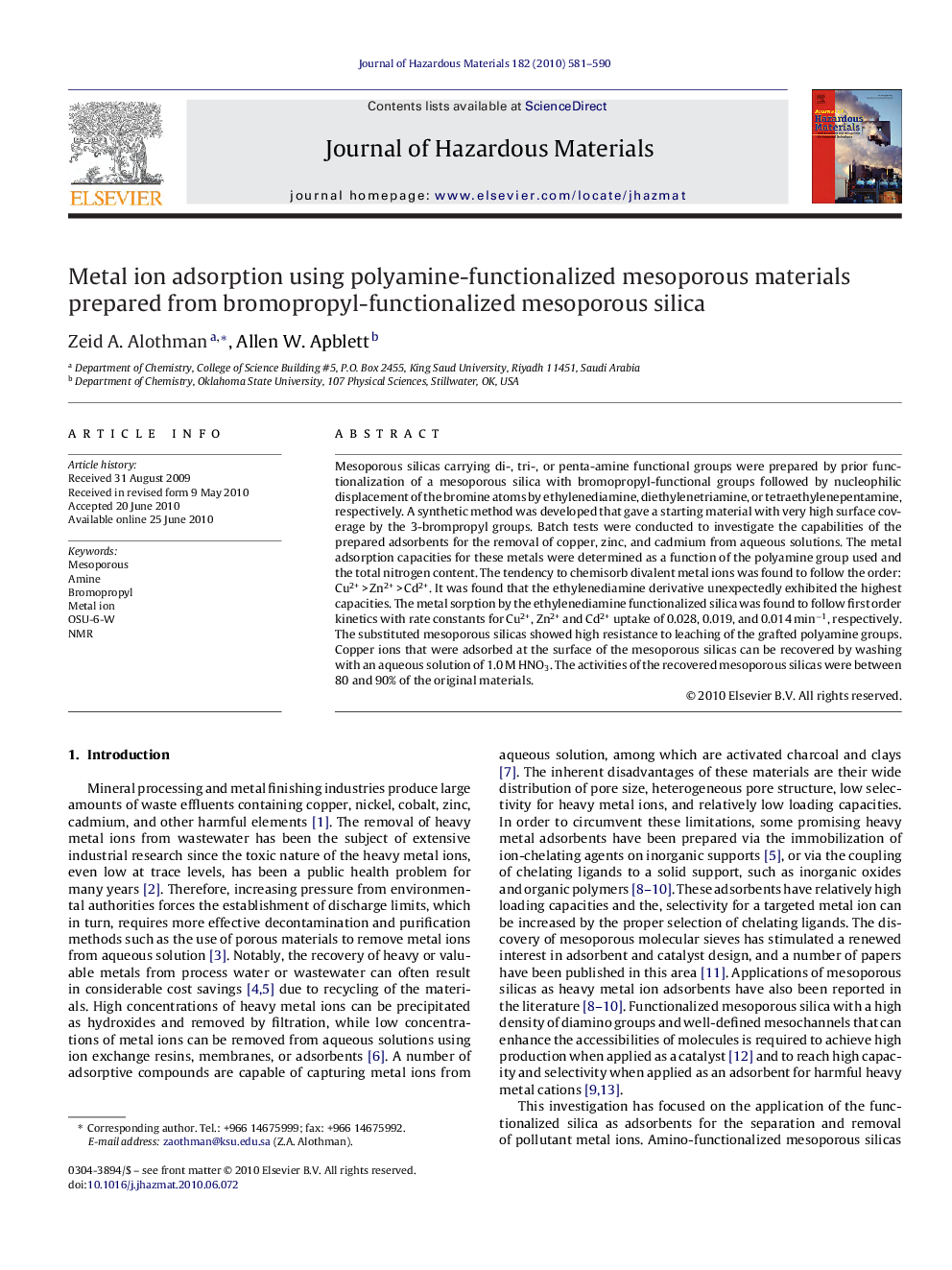| Article ID | Journal | Published Year | Pages | File Type |
|---|---|---|---|---|
| 579728 | Journal of Hazardous Materials | 2010 | 10 Pages |
Abstract
Mesoporous silicas carrying di-, tri-, or penta-amine functional groups were prepared by prior functionalization of a mesoporous silica with bromopropyl-functional groups followed by nucleophilic displacement of the bromine atoms by ethylenediamine, diethylenetriamine, or tetraethylenepentamine, respectively. A synthetic method was developed that gave a starting material with very high surface coverage by the 3-brompropyl groups. Batch tests were conducted to investigate the capabilities of the prepared adsorbents for the removal of copper, zinc, and cadmium from aqueous solutions. The metal adsorption capacities for these metals were determined as a function of the polyamine group used and the total nitrogen content. The tendency to chemisorb divalent metal ions was found to follow the order: Cu2+Â >Â Zn2+Â >Â Cd2+. It was found that the ethylenediamine derivative unexpectedly exhibited the highest capacities. The metal sorption by the ethylenediamine functionalized silica was found to follow first order kinetics with rate constants for Cu2+, Zn2+ and Cd2+ uptake of 0.028, 0.019, and 0.014Â minâ1, respectively. The substituted mesoporous silicas showed high resistance to leaching of the grafted polyamine groups. Copper ions that were adsorbed at the surface of the mesoporous silicas can be recovered by washing with an aqueous solution of 1.0Â M HNO3. The activities of the recovered mesoporous silicas were between 80 and 90% of the original materials.
Keywords
Related Topics
Physical Sciences and Engineering
Chemical Engineering
Chemical Health and Safety
Authors
Zeid A. Alothman, Allen W. Apblett,
